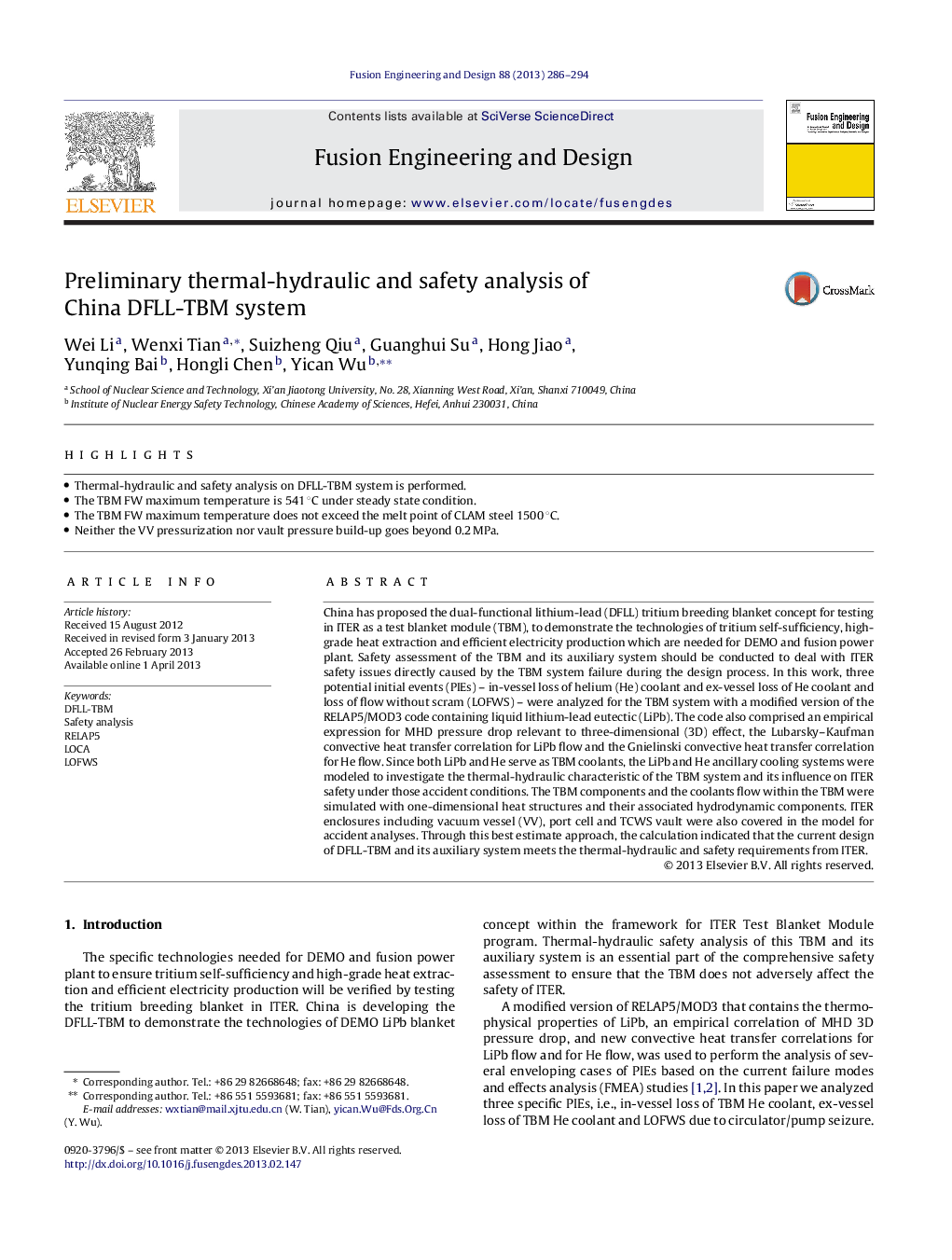| کد مقاله | کد نشریه | سال انتشار | مقاله انگلیسی | نسخه تمام متن |
|---|---|---|---|---|
| 271591 | 504998 | 2013 | 9 صفحه PDF | دانلود رایگان |

• Thermal-hydraulic and safety analysis on DFLL-TBM system is performed.
• The TBM FW maximum temperature is 541 °C under steady state condition.
• The TBM FW maximum temperature does not exceed the melt point of CLAM steel 1500 °C.
• Neither the VV pressurization nor vault pressure build-up goes beyond 0.2 MPa.
China has proposed the dual-functional lithium-lead (DFLL) tritium breeding blanket concept for testing in ITER as a test blanket module (TBM), to demonstrate the technologies of tritium self-sufficiency, high-grade heat extraction and efficient electricity production which are needed for DEMO and fusion power plant. Safety assessment of the TBM and its auxiliary system should be conducted to deal with ITER safety issues directly caused by the TBM system failure during the design process. In this work, three potential initial events (PIEs) – in-vessel loss of helium (He) coolant and ex-vessel loss of He coolant and loss of flow without scram (LOFWS) – were analyzed for the TBM system with a modified version of the RELAP5/MOD3 code containing liquid lithium-lead eutectic (LiPb). The code also comprised an empirical expression for MHD pressure drop relevant to three-dimensional (3D) effect, the Lubarsky–Kaufman convective heat transfer correlation for LiPb flow and the Gnielinski convective heat transfer correlation for He flow. Since both LiPb and He serve as TBM coolants, the LiPb and He ancillary cooling systems were modeled to investigate the thermal-hydraulic characteristic of the TBM system and its influence on ITER safety under those accident conditions. The TBM components and the coolants flow within the TBM were simulated with one-dimensional heat structures and their associated hydrodynamic components. ITER enclosures including vacuum vessel (VV), port cell and TCWS vault were also covered in the model for accident analyses. Through this best estimate approach, the calculation indicated that the current design of DFLL-TBM and its auxiliary system meets the thermal-hydraulic and safety requirements from ITER.
Journal: Fusion Engineering and Design - Volume 88, Issue 5, June 2013, Pages 286–294